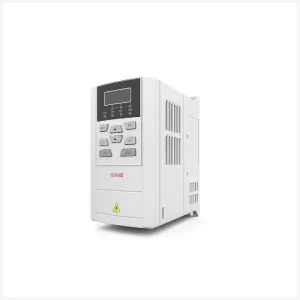AC Drives, also known as Variable Frequency Drives (VFDs), are electronic devices used to control the speed and torque of AC motors. They achieve this control by adjusting the frequency and voltage of the power supplied to the motor. This adjustment not only improves the performance of the equipment but also saves energy and reduces mechanical wear. Below is a detailed introduction to AC drives.

Working Principle
The working principle of AC drives is based on adjusting the input power frequency and voltage to control the motor’s operating speed and torque. The basic steps are as follows:
1. Rectification
The incoming AC power is converted to DC power through a rectifier. The rectifier consists of diodes or thyristors.
2. Filtering
The DC power is smoothed by a filter, which removes the pulsating components and produces a stable DC voltage.
3. Inversion
The DC power is converted back to AC power through an inverter. The inverter consists of a set of switching elements (such as IGBTs, Insulated Gate Bipolar Transistors) that switch at different frequencies and voltages to produce AC power with variable frequency and voltage.
4. Output Regulation
By adjusting the switching frequency and voltage of the inverter, the AC drive can precisely control the frequency and voltage output to the motor, thus regulating the motor’s speed and torque.
Main Functions and Features
1. Speed Control
The primary function of an AC drive is to regulate motor speed. By varying the frequency, the drive can operate the motor over a wide range of speeds.
2. Energy Savings
By accurately controlling the motor’s speed and load, AC drives can significantly reduce energy consumption, especially during partial load operation.
3. Soft Start and Soft Stop
AC drives can achieve soft start and soft stop for motors, avoiding sudden current surges and mechanical shocks, thereby extending the equipment’s lifespan.
4. Protection Features
AC drives are equipped with various protection features such as overload protection, overcurrent protection, overheat protection, undervoltage and overvoltage protection, ensuring the safety of both the motor and the drive.
Application Areas
AC drives are widely used across various industries, including:
1. Industrial Automation
Used to control various mechanical equipment in industrial production, such as conveyor belts, pumps, fans, compressors, and cranes, optimizing production processes and improving efficiency.
2. HVAC (Heating, Ventilation, and Air Conditioning)
In HVAC systems, AC drives are used to regulate the speed of fans and pumps, providing precise air and water flow as needed, and saving energy.
3. Water Treatment
In water treatment facilities, AC drives are used to regulate the speed of pumps and blowers, optimizing the water treatment process and improving system efficiency.
4. Elevators and Hoisting Equipment
AC drives are used in elevators and hoisting equipment to control the acceleration and deceleration of motors, ensuring smooth start and stop operations, increasing safety and comfort.
Advantages and Disadvantages
Advantages
- Significant Energy Savings: By optimizing motor speed and load, energy consumption is significantly reduced.
- Improved Production Efficiency: Precise control of motor speed and torque improves equipment performance and production efficiency.
- Extended Equipment Lifespan: Soft start and soft stop functions reduce mechanical and electrical shocks, extending equipment lifespan.
- Multifunctional Protection: Built-in protection features ensure safe operation of the equipment.
Disadvantages
- High Initial Investment: Compared to traditional direct start or star-delta start methods, AC drives have a higher initial cost.
- Requires Professional Maintenance: The electronic components of AC drives are complex and require professional maintenance and management.
- Electromagnetic Interference: High-frequency switching operations may generate electromagnetic interference, necessitating appropriate shielding measures.
Considerations When Choosing AC Drives
When selecting AC drives, the following factors should be considered
- Motor Parameters: Ensure that the drive’s rated voltage, current, and frequency match those of the motor.
- Application Requirements: Select the drive’s functions based on specific application needs, such as multi-speed control, PID control, etc.
- Environmental Conditions: Consider the working environment’s temperature, humidity, dust, and vibration factors, and choose the appropriate drive model and protection level.
- Brand and After-Sales Service: Choose a brand with a good reputation and comprehensive after-sales service to ensure product quality and subsequent support.
AC drives play a crucial role in modern industry and daily life. By controlling the speed and torque of AC motors, they achieve energy savings, efficiency improvement, and equipment protection. Understanding the working principles, main functions, and application areas of AC drives is essential for selecting and using these devices. During selection and use, it is necessary to comprehensively consider motor parameters, application requirements, and working environment factors to ensure that the drive can operate efficiently and reliably.
